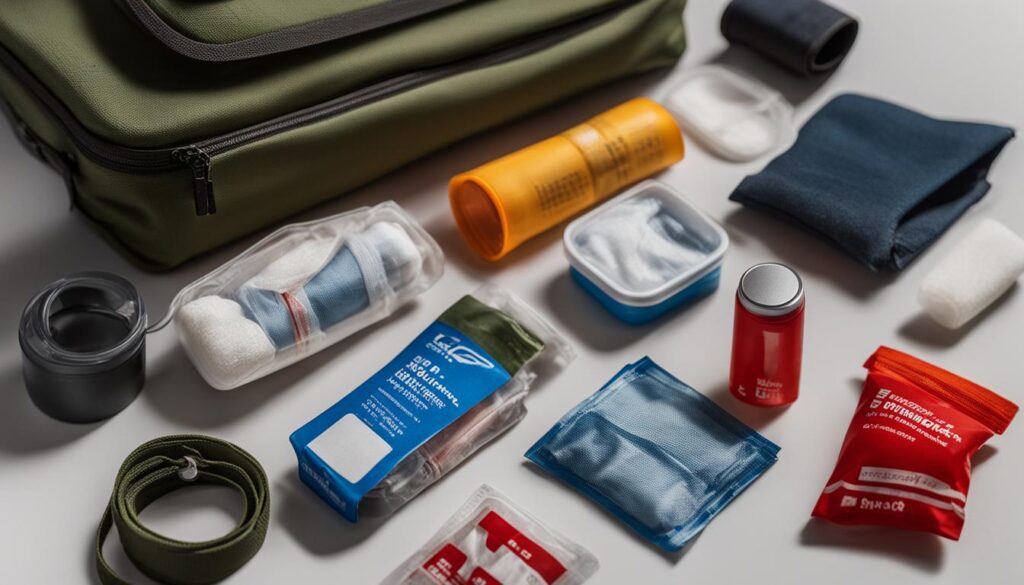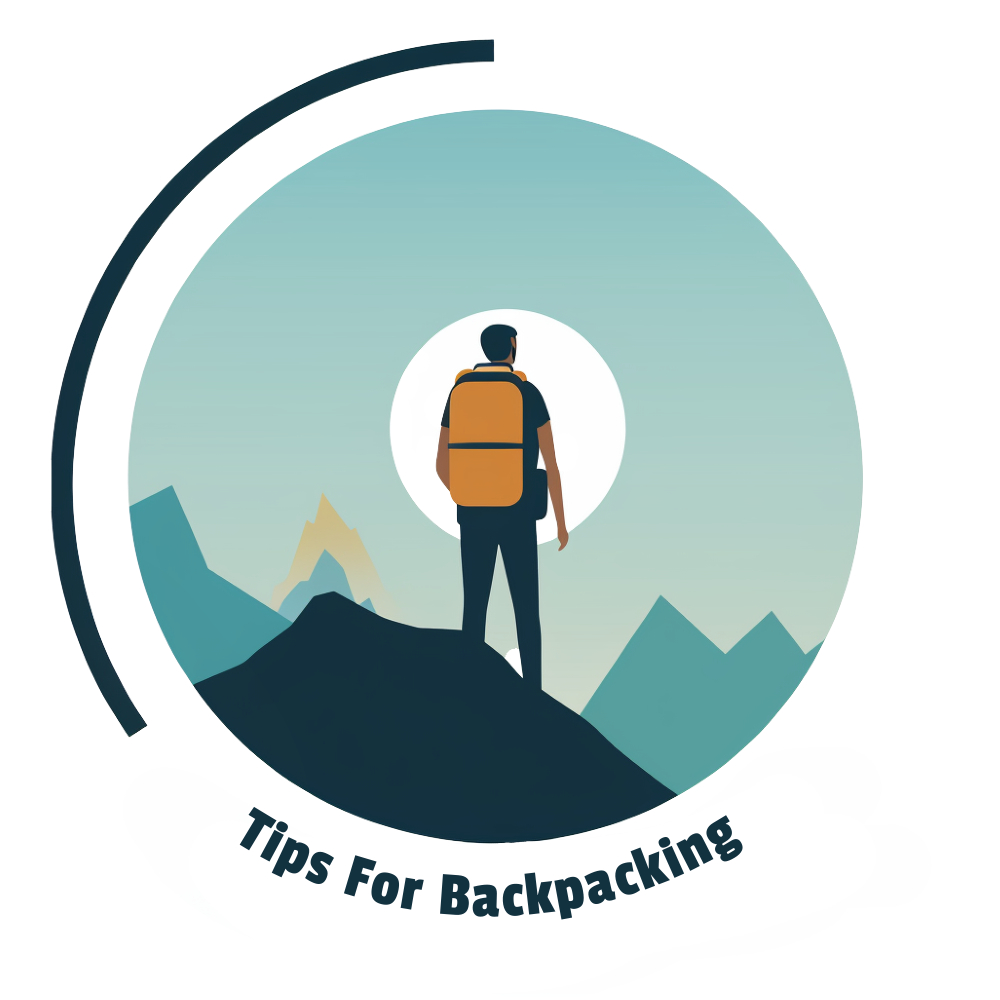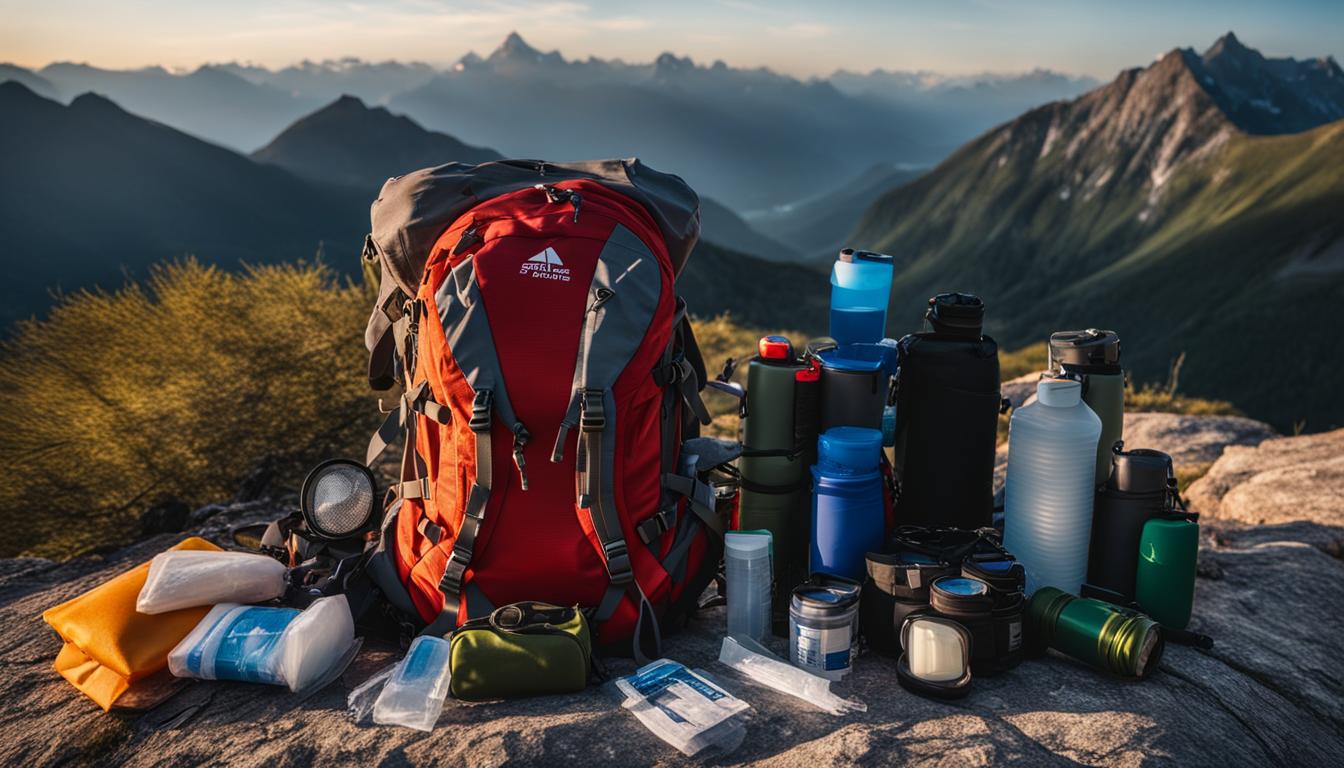When it comes to long-distance backpacking, preparation is key. Having the necessary first aid knowledge and supplies can make a significant difference in an emergency situation. Before embarking on your backpacking trip, it’s important to evaluate the length and nature of your journey to determine what items are essential to pack. Additionally, considering potential injuries and emergencies specific to the environment you’ll be exploring is crucial.
So, what are some essential first aid items to consider for your backpacking adventure? Medical tape, gloves, antiseptic wipes, butterfly closure strips, dressing/gauze, triple antibiotic ointment, hand sanitizer, pain relief medication, antihistamine tablets, duct tape, a small utility tool, a sewing needle, safety pins, a whistle, and emergency fire starters are all important components of a backpacking first aid kit. If you’ll be hiking in developing countries, it may be necessary to bring necessary medications from home as availability can be limited.
To ensure your safety, it’s highly recommended to take a first-aid course and familiarize yourself with wilderness medicine resources. Being well-prepared and educated can give you the confidence to handle any potential emergencies that may arise during your long-distance backpacking journey.
Key Takeaways:
- Evaluate the length and nature of your trip to determine essential first aid items to pack
- Consider potential injuries and emergencies specific to the environment you’ll be exploring
- Essential items for your backpacking first aid kit include medical tape, gloves, antiseptic wipes, dressing/gauze, and more
- Take a first-aid course and research wilderness medicine resources for additional knowledge
- Being well-prepared and educated can give you the confidence to handle emergencies during your backpacking trip
Creating a Personalized First Aid Kit for Backpacking

When it comes to creating a personalized first aid kit for backpacking, there are a few options to consider. You can either purchase a pre-packaged kit from an outdoor goods store, such as Adventure Medical Kits, which contains the essentials and supplement it with specific items that are essential to you and your needs. Alternatively, you can choose to assemble your own medical kit, allowing you to hand-pick each item based on your preferences and the specific requirements of your trip.
Essential items to consider for a basic care first aid kit include antiseptic wipes, antibacterial ointment, assorted bandages, gauze pads, medical tape, moleskin or blister treatment, pain-relief medication, insect sting treatment, antihistamine, non-stick pads, butterfly bandages, tweezers, safety pins, a multitool, and first-aid cards with instructions.
For a comprehensive first aid kit, you may also include items like finger splints, rolled gauze, cleansing pads, blood-stopping gauze, liquid bandage, triangular bandage, relevant medications (such as hand sanitizer, aspirin, eye drops, anti-diarrheal pills, etc.), tools and supplies (like a pocket knife, thermometer, scissors, mirror, etc.), personal items (sunscreen, lip balm, bug spray, feminine hygiene products), and waterproof packaging to carry the kit.
If you prefer ultralight backpacking, you can optimize your first aid kit by reducing the quantity and size of items while still having essential ones like adhesive bandages, medical tape, antibiotic treatment, pills for pain relief, insect sting treatment, antiseptic wipes, butterfly bandages, tweezers, safety pins, moleskin, water treatment tablets, latex gloves, and a whistle.
Table: Comparison of First Aid Kit Options
| Types of First Aid Kits | Advantages | Disadvantages |
|---|---|---|
| Pre-Packaged Kit | Convenient and time-saving | May not contain specific items you need |
| Assembled Kit | Customizable to fit your needs | Requires research and effort to assemble |
Choosing the right first aid kit for backpacking depends on your personal preferences, the nature of your trip, and your level of comfort with assembling your own kit. Regardless of the option you choose, it is important to ensure that your first aid kit is well-stocked, organized, and easily accessible. Regularly check and replenish your supplies to ensure that your kit is ready for any potential emergencies that may arise during your backpacking adventure.
The Importance of Wilderness First Aid Education
When it comes to backpacking in remote areas, having the right first aid supplies is essential. But it’s equally important to have the knowledge and skills to handle emergency situations. That’s why wilderness first aid education is so crucial.
By participating in a wilderness first aid course, you can learn life-saving techniques like CPR, injury management, and how to handle venomous bites and stings. These skills can make a significant difference in the outcome of an emergency situation.
To further enhance your knowledge, there are recommended resources available, such as the book “Wilderness Medicine: Beyond First Aid” by William Forgey and “Medicine for the Outdoors” by Paul Auerbach. These references serve as valuable guides for both beginners and experienced outdoor enthusiasts.
By combining the right supplies with proper education, you can embark on your long-distance backpacking adventure with confidence, knowing that you are prepared to handle any potential emergencies that may arise. So, don’t underestimate the importance of wilderness first aid training – it could save a life.
How Can I Use First Aid Tips for Long-Distance Backpacking to Manage Common Injuries?
When managing backpacking injuries during long-distance backpacking trips, follow essential first aid tips. Carry a well-stocked first aid kit and know how to treat common injuries like blisters, sprains, and cuts. Learn basic first aid techniques before embarking on your journey to ensure a safe and enjoyable experience.
FAQ
What should I include in my backpacking first aid kit?
Some essential items to consider for your backpacking first aid kit include medical tape, gloves, antiseptic wipes, butterfly closure strips, dressing/gauze, triple antibiotic ointment, hand sanitizer, pain relief medication, antihistamine tablets, duct tape, a small utility tool, a sewing needle, safety pins, a whistle, and emergency fire starters.
What medications should I bring when hiking in developing countries?
When hiking in developing countries, it may be necessary to bring necessary medications from home as availability can be limited. Consider taking a broad-spectrum antibiotic, diarrhea stopper, rehydration solution sachet, and medication for giardiasis.
Should I consider taking a first-aid course before backpacking?
Taking a first-aid course and doing research on wilderness medicine resources are highly recommended for long-distance backpacking safety. It will provide you with the necessary skills to handle emergency situations, such as CPR, injury management, and dealing with venomous bites and stings.
Can I purchase a pre-packaged first aid kit or should I assemble my own?
You have the option to either purchase a pre-packaged kit from an outdoor goods store, such as Adventure Medical Kits, which contains the essentials and supplement it with specific items that are essential to you and your needs. Alternatively, you can choose to assemble your own medical kit, allowing you to hand-pick each item based on your preferences and the specific requirements of your trip.
What are some essential items for a basic care first aid kit?
Essential items to consider for a basic care first aid kit include antiseptic wipes, antibacterial ointment, assorted bandages, gauze pads, medical tape, moleskin or blister treatment, pain-relief medication, insect sting treatment, antihistamine, non-stick pads, butterfly bandages, tweezers, safety pins, a multitool, and first-aid cards with instructions.
What should I include in a comprehensive first aid kit for backpacking?
For a comprehensive first aid kit, you may also include items like finger splints, rolled gauze, cleansing pads, blood-stopping gauze, liquid bandage, triangular bandage, relevant medications (such as hand sanitizer, aspirin, eye drops, anti-diarrheal pills, etc.), tools and supplies (like a pocket knife, thermometer, scissors, mirror, etc.), personal items (sunscreen, lip balm, bug spray, feminine hygiene products), and waterproof packaging to carry the kit.
Can I optimize my first aid kit for ultralight backpacking?
If you prefer ultralight backpacking, you can optimize your first aid kit by reducing the quantity and size of items while still having essential ones like adhesive bandages, medical tape, antibiotic treatment, pills for pain relief, insect sting treatment, antiseptic wipes, butterfly bandages, tweezers, safety pins, moleskin, water treatment tablets, latex gloves, and a whistle.
What resources are recommended for wilderness first aid education?
It is highly recommended to invest in educational resources like the book “Wilderness Medicine: Beyond First Aid” by William Forgey and “Medicine for the Outdoors” by Paul Auerbach, which are excellent references for both novice and experienced outdoor enthusiasts. These resources will help you build knowledge in first aid, potentially saving lives in crisis situations.

